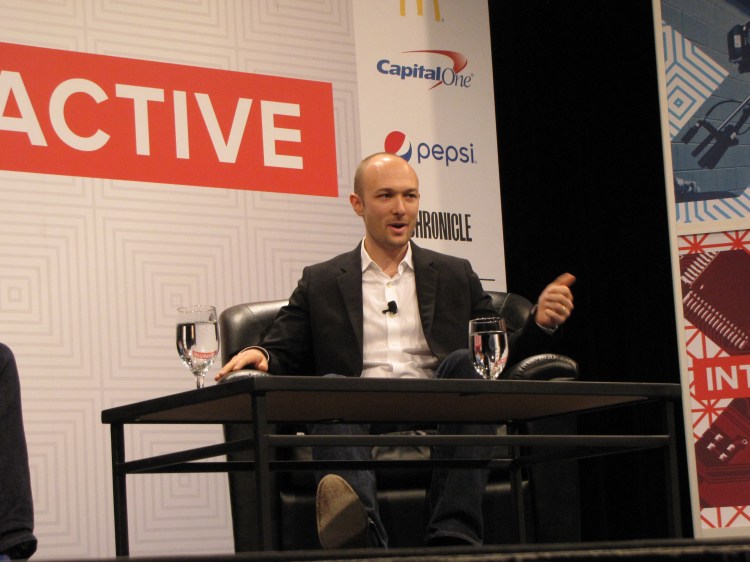AUSTIN, Texas — Lyft CEO Logan Green said today that Lyft Line, which matches riders with similar destinations up with each other, now accounts for the majority of its business in San Francisco.
During a keynote address at South by Southwest (SXSW) here today, Green explained that the low-price offering had become the most popular offering in the company’s hometown of San Francisco.
The company launched Lyft Line six months ago. Green noted that Uber announced — “with no product” — its competing effort within hours.
The fact that Lyft Line is so popular in a city like San Francisco is evidence, Green suggested, of the company’s vision of making transportation seamless and inexpensive. That’s important, he said, because the average American household spends 20 percent of its budget on transportation, and just 5 percent take public transportation to work.
Now, with the company having raised $850 million in total funding at a $3 billion valuation, Green said Lyft is using its money to build out its network of drivers, much in the same way that AT&T would invest in new cell towers.
Asked on stage about a TechCrunch report that Lyft is telling investors it will not be profitable until 2016, Green said that while he could not comment, he did add that, “I … think that they demonstrate that we’re going through a period of intense, rapid growth.”
He also said Lyft grew 500 percent nationally in 2014.
International
Although Green wouldn’t say which cities Lyft will expand to first when it opens up internationally, he did address the question of competition from Uber and from local ride-hailing companies. “I think with the right partners, you can go and make a big impact,” Green said. “We’re learning a lot from large international competitors. … As we go international, we’re looking to add something unique to the market. And so when we do go international, it won’t just be as a taxi service. It will be bringing the pieces that are most unique about Lyft” to international markets.
And while Uber has already dropped its flag in cities around the world, Green noted that the company has only built single-digit market share in (some) countries. “I don’t think their current [international] strategy is working,” Green said.
Uber
Although Uber launched its service before Lyft, Green noted that Uber’s original motto was “Everybody’s Private Driver.” But, he added, “most of the population can’t afford a private driver. … What we’re doing is relentlessly innovating to drive the price down.”
Asked whether Uber had crossed lines in its business practices, Green said yes, but wouldn’t be specific. However, he did allude to a lawsuit Lyft has filed against Uber related to the departure of an employee.
He also acknowledged that there are plenty of drivers who work for both Lyft and Uber. “We both encourage that. There are plenty of reasons someone might want to drive for both. … There are plenty of drivers who drove for Uber first, and then moved over to Lyft” and vice versa.
In the meantime, Green cited Lyft’s ability to help creative people make money as they work on their own projects. Fully 60 percent of Lyft’s “hundreds of thousands” of drivers are creatives, he said. That number includes himself — Green sometimes drives for Lyft. In fact, he said to laughter, he picked someone up the other day and made $20 on his way to work.
VentureBeat's mission is to be a digital town square for technical decision-makers to gain knowledge about transformative enterprise technology and transact. Learn More

